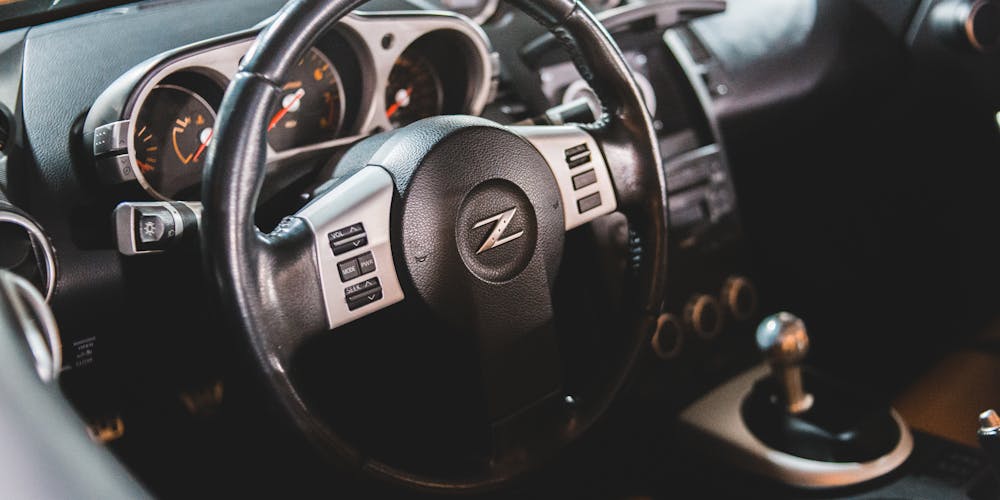The Role of Cushions in Enhancing Vehicle Safety and Comfort
In today's fast-paced world, comfort and safety are paramount when it comes to vehicles. With the increase in road accidents and long hours spent on the road, the importance of cushions for enhanced safety and comfort in vehicles cannot be overstated. These cushions play a crucial role in providing these elements, making driving and riding experiences more pleasurable and secure.
From reducing fatigue and improving posture to protecting occupants in the event of an accident, cushions offer a myriad of benefits that enhance the overall experience of being in a vehicle. In this article, we will explore the different types of cushions used in vehicles, their materials and construction, design and ergonomics, testing and evaluation, and their integration into vehicle seats. We will also discuss the benefits, limitations, and future trends in cushions for enhanced vehicle safety and comfort.
Types of Cushions for Enhanced Vehicle Safety and Comfort

Cushions used in vehicles can be broadly categorized into two types - passive and active. Passive cushions provide passive protection to the occupants, while active cushions have additional features that actively protect the occupants during an accident.
Passive cushions:
Passive cushions act as a buffer between the occupant and the hard interior of the vehicle, reducing the risk of serious injuries in case of an accident. These cushions are typically made of foam or other soft materials and are designed to dissipate impact forces and prevent trauma to sensitive areas of the body.
Some common types of passive cushions used in vehicles include:
- Headrests: These cushions are designed to support the head and neck and reduce the risk of whiplash injuries in case of a rear-end collision.
- Seat cushions: These cushions provide padding and support to reduce pressure points and improve overall comfort during long journeys.
- Lumbar support cushions: These cushions are designed to support the lower back and promote good posture, reducing the risk of back pain and fatigue.
Active cushions:
Active cushions have additional features that actively protect the occupants during an accident. They may include technologies such as airbags, seat belts, and other safety mechanisms that are triggered in case of a collision.
Some common types of active cushions used in vehicles include:
- Airbags: These cushions inflate rapidly during a collision to provide a cushioning effect and reduce the risk of serious injuries to the head, chest, and other areas of the body.
- Seat belts: These cushions are an essential safety feature in vehicles and are designed to keep the occupant securely in their seat during an accident.
- Knee bolsters: These cushions are placed under the dashboard to prevent the occupants' knees from hitting hard surfaces during a collision.
Materials and Construction of Cushions for Enhanced Vehicle Safety and Comfort
:max_bytes(150000):strip_icc()/how-to-clean-outdoor-furniture-2146920-hero-151620df12584ff8bd4d11bd4226b32e.jpg)
The materials used in the construction of cushions play a crucial role in enhancing their safety and comfort properties. The most commonly used materials include foam, gel, and air. Each material has its unique properties and benefits, depending on the type of cushion and its intended function.
Foam cushions:
Foam is the most widely used material in vehicle cushions due to its low cost, lightweight, and shock-absorbing properties. It is also easily moldable, making it suitable for various cushion shapes and sizes. The most commonly used foam types include polyurethane, memory foam, and latex foam.
Polyurethane foam is the most popular choice for car cushions due to its high density, durability, and ability to retain its shape. However, it can be quite firm, so adding a layer of softer foam or padding on top can enhance its comfort properties.
Memory foam, also known as viscoelastic foam, is another popular choice for vehicle cushions. It molds to the shape of the body, providing excellent support and pressure relief. However, it can be quite dense, making it less breathable and prone to trapping body heat.
Latex foam is known for its excellent support, comfort, and durability. It is also naturally hypoallergenic and resistant to mold, mildew, and dust mites. However, it can be quite expensive compared to other foam types.
Gel cushions:
Gel cushions are made of a gel-like material that molds to the shape of the body, providing excellent pressure relief and support. They are commonly used in wheelchair cushions and are gaining popularity in vehicle cushions as well. The gel helps distribute weight evenly, reducing pressure points and promoting better blood flow.
Gel cushions also have cooling properties, making them an excellent choice for those who tend to get hot and sweaty while sitting for prolonged periods. However, they can be quite heavy and may not be suitable for all types of vehicles.
Air cushions:
Air cushions are made of inflatable materials and provide even weight distribution and pressure relief by adjusting to the shape of the body. They are highly customizable, allowing users to adjust the firmness and height to their liking. Air cushions are also lightweight and easy to transport, making them a popular choice for long journeys.
However, air cushions can be prone to punctures and require proper maintenance and inflation to ensure optimum performance.
Cushion Design and Ergonomics for Enhanced Vehicle Safety and Comfort

Apart from the materials used, the design and ergonomics of cushions also play a crucial role in enhancing their safety and comfort properties. A well-designed cushion should provide ample support, promote good posture, and reduce pressure points.
The following are some key factors to consider when designing cushions for enhanced vehicle safety and comfort:
Thickness and Firmness:
The thickness and firmness of a cushion can significantly impact its safety and comfort properties. A cushion that is too thin or too soft may not provide enough support and can increase pressure points, leading to discomfort and fatigue. On the other hand, a cushion that is too thick or too firm may provide adequate support but can be uncomfortable to sit on for long periods.
Contouring and Shape:
Cushions that are designed to contour to the shape of the body provide better support and pressure relief than flat cushions. The contouring helps distribute weight evenly, reducing pressure points and promoting good posture. Similarly, the shape of the cushion should also be considered, as it can impact the user's comfort levels. Some common shapes used in vehicle cushions include wedge, U-shape, and V-shape.
Breathability and Cooling Properties:
Sitting for prolonged periods can cause discomfort and sweating, especially during hot weather. Cushions that have breathable materials or cooling properties can help prevent this issue and keep the occupant comfortable. Gel and air cushions are known for their cooling properties, while foam cushions with breathable covers can also aid in temperature regulation.
Ergonomic Considerations:
Different individuals have different needs when it comes to sitting comfortably. Therefore, it is essential to consider ergonomic principles when designing cushions for enhanced vehicle safety and comfort. This includes factors such as lumbar support, seat depth, and armrests, which can significantly impact the user's comfort and overall well-being.
Testing and Evaluation of Cushions for Enhanced Vehicle Safety and Comfort

Before being integrated into vehicles, cushions undergo rigorous testing and evaluation to ensure they meet safety and comfort standards. Different types of tests are conducted, depending on the type of cushion and its intended function.
The following are some common tests carried out on cushions for enhanced vehicle safety and comfort:
- Impact tests: These tests are conducted to evaluate the cushion's ability to dissipate impact forces and protect the occupant during a collision. This includes simulating various impact scenarios, such as front, rear, and side collisions.
- Pressure mapping: This test measures the pressure distribution on the cushion surface and helps identify areas of high pressure that can lead to discomfort and fatigue.
- Thermal comfort tests: These tests are conducted to evaluate the cushion's ability to regulate temperature and prevent sweating and discomfort.
- Durability tests: Cushions are subjected to repeated use and wear and tear to evaluate their durability and longevity.
- Ergonomic evaluations: These tests involve having a group of individuals sit on the cushion for an extended period while their posture, comfort, and pressure points are monitored and evaluated.
Integration of Cushions into Vehicle Seats for Enhanced Safety and Comfort

The integration of cushions into vehicle seats is a crucial step in ensuring maximum safety and comfort for the occupants. Proper cushioning can help reduce the risk of injuries during an accident and provide support and stability during long journeys.
Manufacturers must carefully consider the type, design, and positioning of cushions in vehicle seats to ensure they are effective in enhancing safety and comfort. The following are some key considerations when integrating cushions into vehicle seats:
- Use of different types of cushions: To provide optimal protection and comfort, manufacturers may use a combination of passive and active cushions in vehicle seats. For example, a seat may have foam cushioning with an integrated airbag or gel inserts for additional support and protection.
- Proper placement and coverage: Cushions must be strategically placed to provide adequate support and protection to sensitive areas of the body. For example, headrests should be at the correct height and distance from the occupant's head to prevent whiplash injuries.
- Adjustability: Vehicle seats equipped with adjustable cushions allow users to customize the cushion's firmness, height, and angle, providing a more personalized and comfortable experience.
Benefits of Cushions for Enhanced Vehicle Safety and Comfort
The use of cushions in vehicles has numerous benefits, making them an essential safety feature. Some of the key benefits include:
- Reduced risk of injuries: Cushions act as a buffer between the occupant and the hard interior of the vehicle, reducing the risk of serious injuries in case of an accident.
- Improved posture and comfort: Ergonomic cushions provide support and promote good posture, reducing the risk of back pain and fatigue during long journeys.
- Pressure relief: Cushions with appropriate thickness, firmness, and contouring can significantly reduce pressure points and improve overall comfort.
- Customizability: With the use of adjustable cushions, users can personalize their seating experience, making it more comfortable and enjoyable.
Limitations and Considerations for Cushions in Vehicles
While cushions offer numerous benefits, there are some limitations and considerations to keep in mind when using them in vehicles. These include:
- Limited protection against certain types of collisions: While cushions can protect against impact forces, they may not be as effective in preventing injuries in certain types of accidents, such as rollovers or side impacts.
- Maintenance and replacement costs: Some types of cushions may require regular maintenance and replacement, which can add to the overall cost of owning a vehicle.
- Compatibility with safety features: When choosing aftermarket cushions, it is essential to ensure they do not interfere with the vehicle's existing safety features, such as airbags or seat belts.
- Personal preferences: Everyone has different needs and preferences when it comes to seating, making it challenging to find a one-size-fits-all solution.
Future Trends in Cushions for Enhanced Vehicle Safety and Comfort
As technology continues to advance, so does the development of cushions for enhanced vehicle safety and comfort. Some emerging trends in this field include:
- Smart cushions: These cushions incorporate sensors and other technologies to monitor the occupant's vital signs, posture, and comfort levels and adjust accordingly.
- Advanced materials: The use of advanced materials, such as shape memory alloys and composite materials, may lead to lighter, stronger, and more durable cushions.
- Intelligent integration with vehicle systems: With the advancement of driver assistance and autonomous driving technology, cushions may be integrated with the vehicle's systems to provide a more personalized and comfortable riding experience.
Conclusion: The Importance of Cushions for Enhanced Vehicle Safety and Comfort
In conclusion, cushions play a crucial role in enhancing the safety and comfort of vehicles. From providing passive protection during an accident to promoting good posture and reducing fatigue during long journeys, cushions offer a myriad of benefits that cannot be overlooked. With advancements in materials, design, and technology, we can expect to see even better cushions in the future, making driving and riding experiences safer and more comfortable for all.



